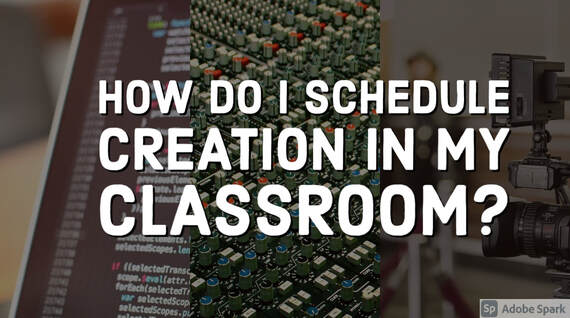|
I think most teachers would tell you deep down that the best learning experiences and the most incredible products they get all come from letting students create to show what they know in a class. Secretly, they like the outcome, but they hate the process it takes to get there. With that, student creation only becomes an option in limited periods. For most teachers, it simply is just too much for teachers to feel like they are getting the content in and letting students create to show what they know. It’s easier than they think, though.
Building student creation into your classroom all starts with mindset. Most teachers see too many roadblocks to it. It could be a feeling of getting too many bad products (even though the best ones are incredible), or there just simply isn’t enough time. The content can be so overwhelming that they think the only way to get there is to deliver it themselves, even though students may not be getting a deep understanding. However, the simple truth is that all of this can be overcome with creative scheduling and a great process. Hopefully, through this blog and a couple of others, you might be able to find a schedule and strategy that works for you. Let’s take this one to focus all on making time for creation. Let’s start the scheduling conversation by defining units, and let’s assume that we will assess after every unit. If you have too many units, you then spend too much time on test days. Assessments are necessary to see where students are, but they can be lost days. Most students will burn out after a significant test, and because of that, you are losing time for creation. The question to ask then is can I split my content up into 5 to 6 units? If you need more assessments to make sure students are in the right place, you can always add short quizzes. The next step is to calendar your class. I always found that starting with an 80-day calendar for a state test-type class was always about right. It gave me enough time to finish content before the state test with some extra days built in for things like pep rallies, field trip days, and special events. You can always create more content, especially on review days, but this will give you a great place to start. Now that you have the 80-day timeline, you then have to move into standards. The key is to get everything covered before the state test, and unfortunately, standards are so overstuffed that you have to move quickly. It does not mean you have to spend the same amount on each one. What I always found helpful was to work through the standards and first make sure I have time to cover each topic. I can then adjust the time I spend on each one to take away front the ones that are not interesting to me and add more time to what I love. It’s always better to spend time on the content I like. The final step is to plan the creation, and I want you to remember two things right off the bat: choice and unit-based. If you wish for student creation to be part of your classroom, find scenarios that fit several different topics in the unit and piece together projects that students can then choose from in the unit. You could then direct students to a specific project if they are struggling with certain content. If the unit is large, you could cut down the choices they have into a couple of different sections to make sure they are doing more than one piece of content. Now is all of this easy. It isn’t at the beginning, but you can get there with practice. You also have to have great ways to recreate the creation process, so putting these projects and choices together doesn’t take you as long. Guess what? We will cover that in future blogs.
0 Comments
Leave a Reply. |
Archives
January 2023
Categories |

 RSS Feed
RSS Feed
